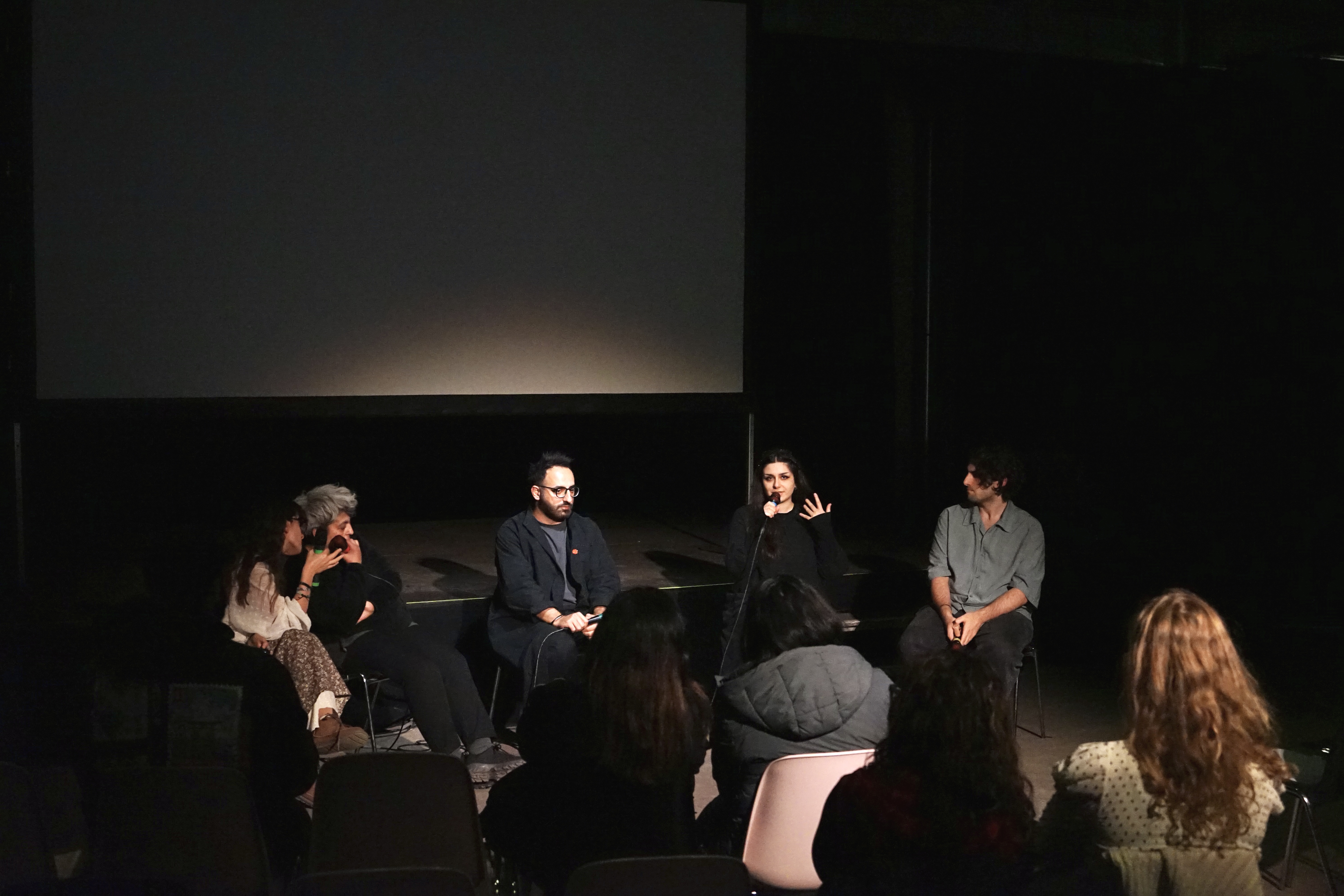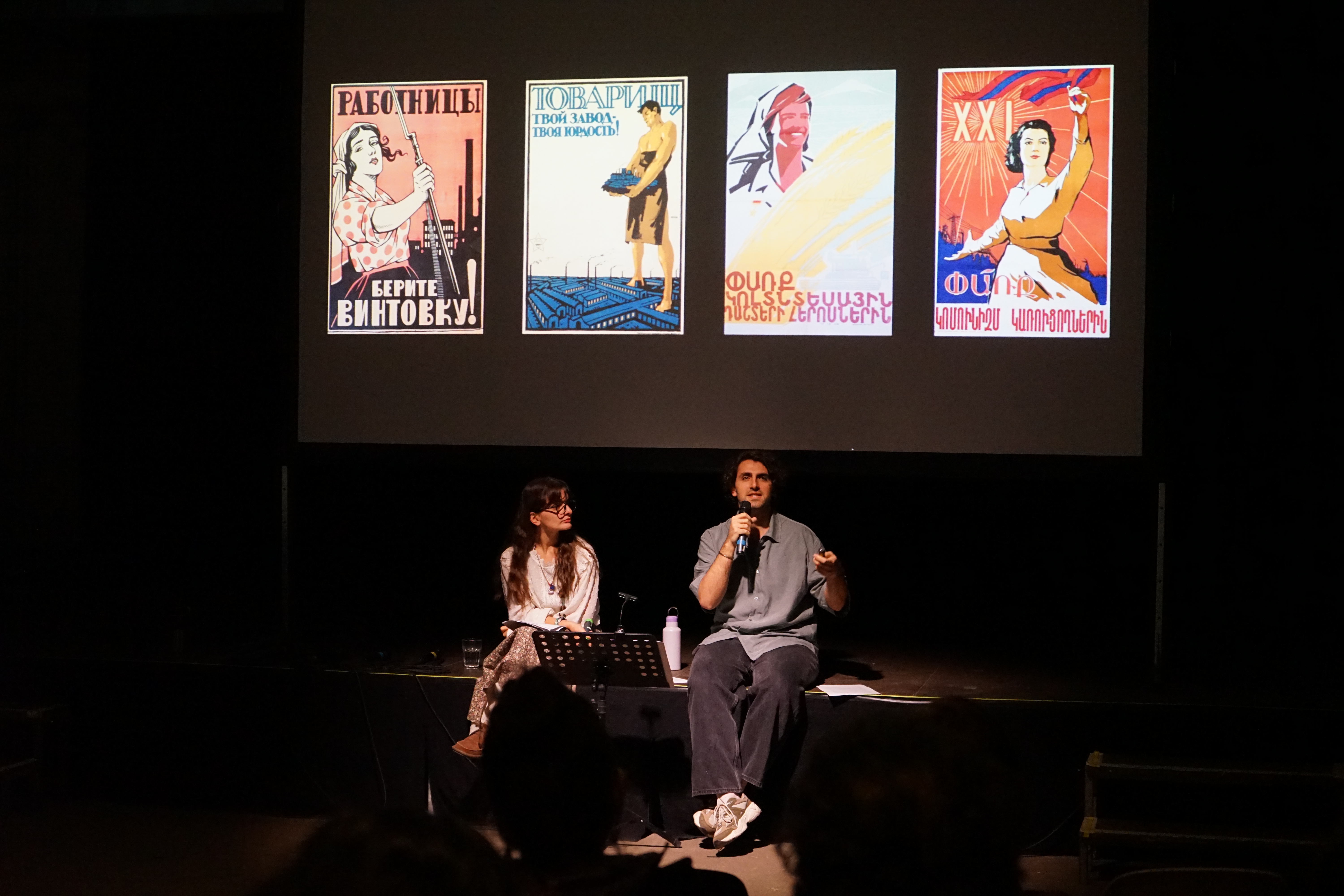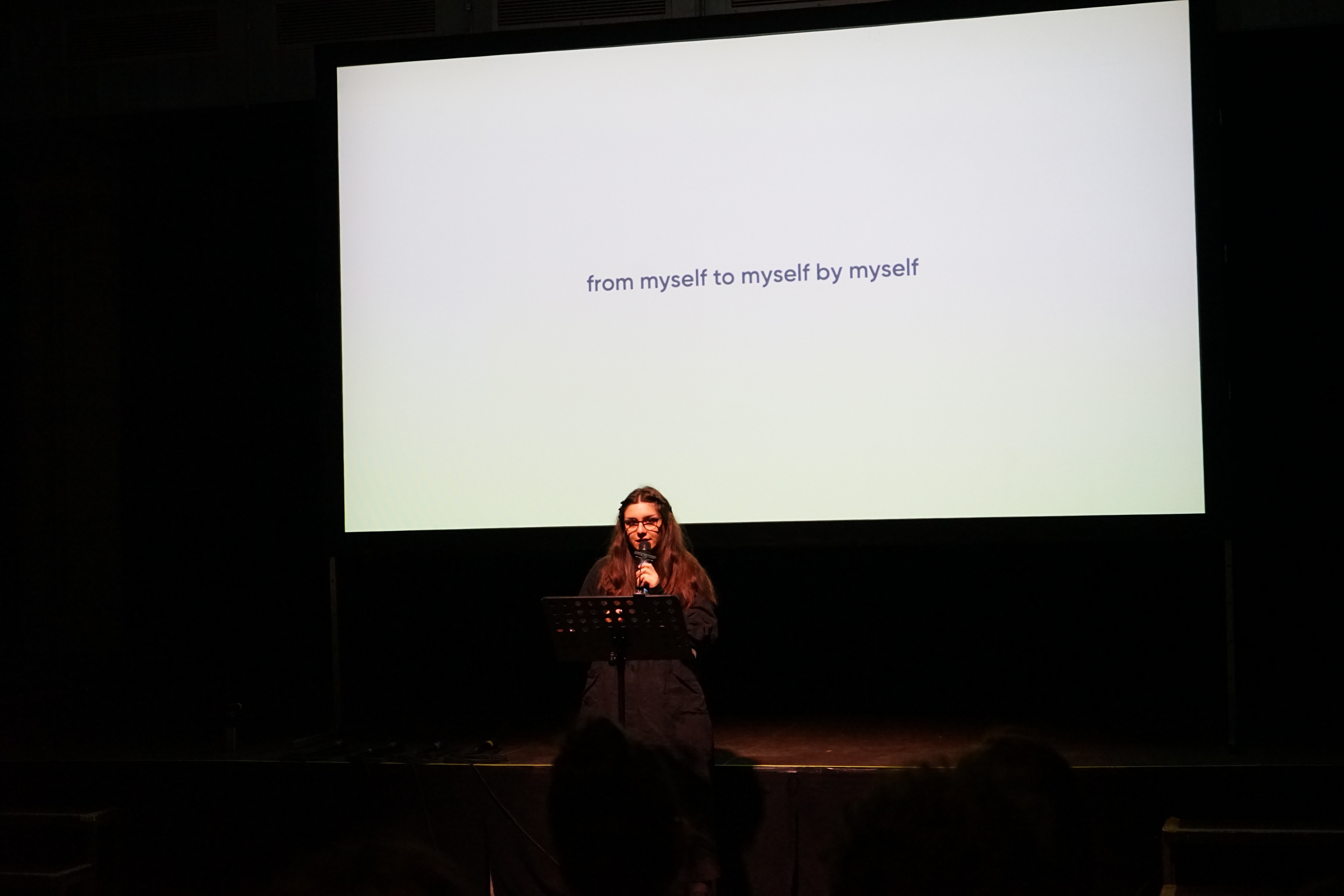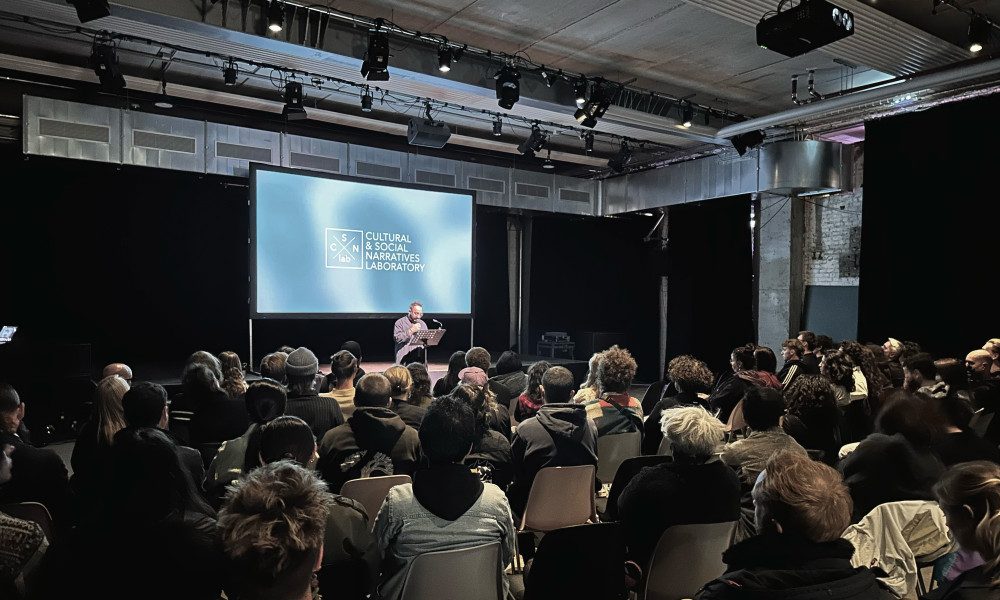Expanding the geography of cultural dialogue, CSN Lab presented a special program at ZK/U (Center for Art and Urbanistics) in Berlin. Centred on the research project Memory of the Body, launched by CSN Lab in 2024, this event became a platform to introduce Armenian contemporary art and culture to an international audience through the lens of the body and corporeality.
By questioning the "body(less)ness" of Armenian culture, and particularly focusing on the portrayal of the body in visual arts through the lens of memory, this research explores the transformations in the role(s) and meaning(s) of the body, maps and analyses its various expressions and signs.
“What is the memory of the body? What signs does it bear? What kind of political, cultural and social transformations are reflected through its representation? What does it point out? What does the body manifested in art and culture keep silent about, and what does it hide?”
Curated by Tigran Amiryan, the program under the title of EMBODIED MEMORIES responded to these questions, presenting reflections and expressions of these issues, as well as their social and political triggers in the Armenian context. The program, consisting of multiple components, included artist talks, film screenings, discussions, and the launch of the English edition of Memory of the Body: Analysing the Representation of the Body in Contemporary Armenian Culture and Art. Before the start of the program, guests and speakers gathered around a specially curated dinner by ZK/U together with the Berlin-based Armenian “café Arakil”, which featured Armenian cuisine and its practices.

“The past is multi-layered and complex, which is why we work with a non-monumental memory landscape. So is our present, which continues to be shaped by colonisation and by the endless struggle for the right to memory, for the visibility and existence of our bodies in a militarised and patriarchal region.” This is how the event began, with Tigran Amiryan presenting the years of CSN Lab’s work, particularly the Memory of the Body research project and one of its key conceptual references: Didier Anzieu’s The Skin-Ego. He also reflected on the Armenian presentation of the research and the reactions it generated in the local cultural field, as well as following important developments in the discourse around the body, before handing the stage to the artists from Armenia and to the launch of the English translation of the book.
The authors of Memory of the Body, Arsen Abrahamyan and Mariam Yeghiazaryan, presented the project’s methodology and conceptual framework, tracing discursive transformations of corporeality in contemporary Armenian art, its resistance and defiance, as well as its oblivion and liberation. Addressing the complex past of Armenia, particularly the Soviet body politics, the growing militarisation of the independence era, the pressures of heteronormativity, and neo-colonial influences, the authors uncovered the forms of corporeality that emerge uniquely in opposition to these forms of repression and constraint.

Around these silenced narratives was unfolding the talk by contemporary artist Amassia Niziblian, whose art focuses on the body, gender and sexuality, its perceptions and expressions, the interrelations of the body. At the core of the artist’s work is the exploration of family memory and archives, as a way to question the past, examine it, and reflect on very sensitive and personal issues. From myself to myself by myself, 29, Josephine, Corporeal: through these and other works, Amassia Nizibilian reflected on the centrality of the body in her art, not only as a medium or allegory but also as a possibility to read and express gender-related issues, and the binary of violence and freedom.

The EMBODIED MEMORIES concluded with the screening of a film by lucine talalyan, a member of the art collective Queering Yerevan, which holds a unique place in Memory of the Body research, as well as in the landscape of Armenian contemporary art. The film openly questions exclusion and heteronormativity in Armenian society, inscribed onto the city, culture, and people. In postDIY, the raw architecture of the city, the scenes of Soviet multi-story apartment grey blocks, are juxtaposed with the intimacy and vulnerability of queer existence. By contrasting the brutality of the urban landscape with bodies seeking care yet remaining invisible and unacceptable within it, talalyan’s film reflects on the body politics carried over from Soviet to post-Soviet realities.
The program evolved into an open-format discussion with the curator, researchers, and artists. These conversations reflected on the research and the presented artworks while also opening up new perspectives and questions around the topic. All of this fosters us to create new opportunities to examine the corporeality of Armenian contemporary art and culture, to promote reflection around it, and to present it both within Armenia and in broader cultural contexts. CSN Lab continues its work on the subject, as every attempt to bring it into public and cultural discourse also faces counter-reactions, which in turn highlight the necessity of placing corporeality and the body at the centre, liberating them from dominant narratives and imposed stamps.
As of now the English edition of the book Memory of the Body: Analysing the Representation of the Body in Contemporary Armenian Culture and Art can be found in the café Arakil in Berlin.

